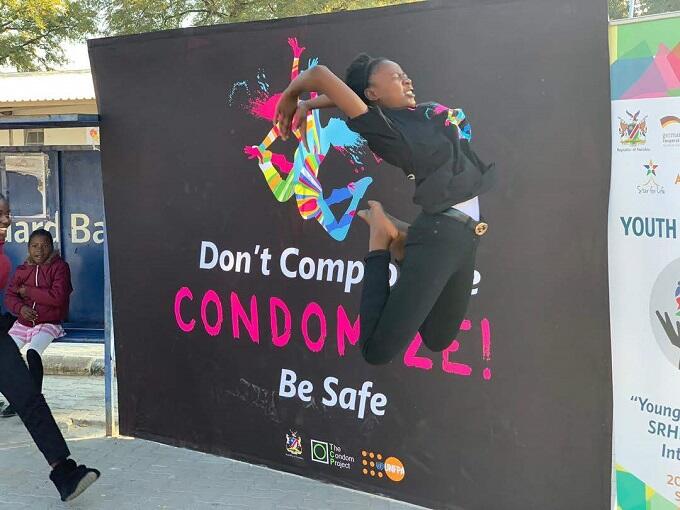WINDHOEK, Namibia - Local community leaders and residents of Katima Mulilo were all in attendance to witness the vibrant regional launch of the #Condomize Campaign that took place on the 28th of June 2019 in the Zambezi Region.
Centered on raising awareness on sexual reproductive health and rights (SRHR) and sexually transmitted infections (STIs) such as HIV as well as creating demand generation for condom use among young people, the #Condomize Campaign launch was hosted at the Katima Mulilo Open Market.
The Town Mayor, her worship Geogina Mwiya-Simataa, gave a warm speech to welcome all those in attendance. She was followed by the Governor of the Zambezi Region, Mr. Alfea Sampofu, who delivered a candid speech on the challenges faced by his region as part of his keynote address to officially launch the campaign.
Governor Sampofu highlighted that his region has the highest HIV prevalence rate in the country, and therefore, required more intense efforts to fight the deadly scourge. “We need to intensify our efforts in ensuring that condom use increases [in the region] as it will help us in reducing the number of HIV infections as well as the high teenage pregnancy rate which currently stands at 28 per cent,” said Sampofu. “As we rightly know, condoms do not only prevent sexually transmitted diseases such as HIV but also prevent unwanted pregnancies,” he emphasized.
Sampofu called on all residents, particularly young people, whom he described as the most affected by STIs, to learn as much as they can on the benefits of condom use so that they can make informed choices. “One of the important pillars of HIV combination prevention is condoms. They are critical if we are to end AIDS by the year 2020. And today I am particularly glad that with our partners like UNFPA and others we can still continue the fight against HIV in this region,” said the governor.
According to the recent Namibia Population-Based HIV Impact Assessment (NAMPHIA) 2018 report, HIV prevalence in the Zambezi Region stands at a worrisome 22.3 per cent. The figure is higher than the national prevalence rate of 12.6 per cent. The National Demographic Health Survey of 2013 indicated a very low condom use rate of 5.3 per cent for male condoms and 0.2 per cent for female condoms.





